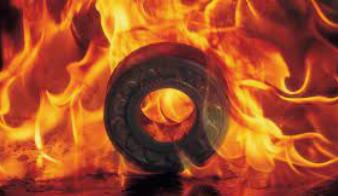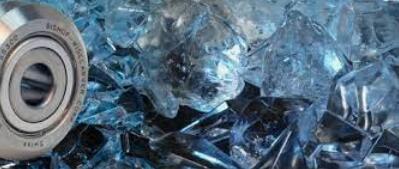The Importance of Preload in Bearings
If you're looking for a fun and informative read about preloading in bearings, then look no further!
Discover the crucial role that preload plays in optimizing your bearings' performance and maximizing their lifespan.
So why not give it a read and get ready to preload like a pro?
Are you ready to take your bearings to the next level? Then it's time to talk about preload!
Whether you're a seasoned engineer or just starting out, understanding the importance of preload in bearings is crucial for achieving optimal performance.
Preload can help reduce noise and vibration, increase accuracy, and extend the lifespan of your bearings.
So let's dive in and explore this essential concept together!
Importance of preload in bearings:
-Preload helps to reduce noise and vibration in bearings
-Preload increases the accuracy of bearings, improving their performance
-The use of preload extends the lifespan of bearings
-Different types of preload can be used depending on the specific application requirements
-Calculating the optimal preload is essential for achieving maximum performance from bearings
-Achieving the perfect preload can be achieved through careful design and assembly techniques
In this article, we'll explore why preload is so important for achieving top-notch performance from your bearings.
We'll provide some tips and tricks for achieving the perfect preload, so you can get the most out of your bearings.
So if you're excited to take your bearings to new heights of excellence, keep reading!
Importance of understanding temperature effects in bearings

Understanding how temperature affects bearings is critical for ensuring their optimal performance and longevity.
Here are some key reasons why:
-Temperature changes can cause thermal expansion or contraction in the bearing components, which can lead to misalignment or increased stress on the bearings.
-Excessive heat can cause premature wear and damage to the bearings, reducing their lifespan and potentially causing failure.
-Cold temperatures can also impact bearing performance by reducing lubrication effectiveness and increasing friction.
-By understanding the temperature effects on bearings, appropriate precautions can be taken to prevent damage and optimize performance,
such as using high-temperature lubricants or implementing cooling systems.
-Regular monitoring of bearing temperature is essential for detecting potential issues early and addressing them before they escalate into major problems.
Taking temperature effects into account when designing, installing, and maintaining bearings is crucial for ensuring their reliability and maximizing their efficiency over time.
Effects of high temperature on bearing performance

When bearings are exposed to high temperatures, several detrimental effects can occur. Here's a closer look at each one:
Lubrication breakdown
High temperatures can cause lubricants to break down more quickly, reducing their effectiveness in reducing friction and wear.
This can lead to increased heat and further degradation of the lubricant, resulting in a vicious cycle that ultimately damages the bearing.
Increased wear and fatigue
Heat can cause the metal surfaces of bearings to expand, which can increase the amount of wear and stress on the components.
Over time, this can lead to premature fatigue and failure of the bearing.
Bearing material degradation
The high temperatures can also cause changes to the chemical and physical properties of the bearing materials, reducing their strength and increasing the likelihood of cracking or deformation.
Reduced load capacity
When bearings are subjected to high temperatures, their load-carrying capacity can be reduced.
This means that they may not be able to support as much weight or withstand the same level of stress as they normally would.
These effects can compound with each other, leading to significant damage to the bearings and potentially even catastrophic failure.
To avoid these issues, it's important to take precautions such as using high-temperature lubricants, implementing cooling systems, and monitoring the bearings closely for signs of wear or damage.
Regular maintenance and inspection can also help catch any potential problems before they escalate.
Effects of low temperature on bearing performance

Low temperatures can also have negative effects on bearing performance. Here are the key ways in which this can occur:
Reduced lubricant viscosity
Low temperatures can cause lubricants to become thicker and less fluid, reducing their ability to flow and distribute evenly throughout the bearing.
This can lead to increased friction and wear, as well as decreased overall performance.
Increased risk of moisture and corrosion
Cold temperatures can lead to the accumulation of moisture in and around bearings, which can increase the risk of corrosion and damage to the components.
This is especially true in environments with high humidity or exposure to moisture.
Decreased dimensional stability
The cold temperatures can cause materials to contract, leading to changes in the dimensional stability of the bearing components.
This can result in misalignment or increased stress on the components, leading to premature wear and potential failure.
Reduced load capacity
As with high temperatures, low temperatures can also reduce the load-carrying capacity of bearings.
This means that they may not be able to support as much weight or withstand as much stress as they would at higher temperatures.
To mitigate these effects, it's essential to take steps such as using appropriate lubricants for low-temperature applications,
implementing proper sealing and protection against moisture, and monitoring the bearings closely for signs of wear or damage.
Regular maintenance and inspection can help catch any issues early and prevent them from escalating into major problems.
Factors affecting bearing temperature
The temperature of a bearing can be affected by several factors. Here's a closer look at each one:
Speed
The faster a bearing rotates, the more heat is generated due to friction between the components.
Load
Bearings that are subjected to heavier loads may generate more heat due to increased stress on the components.
Environmental conditions
Factors such as ambient temperature, humidity, and exposure to dust or other contaminants can all affect bearing temperature.
Lubrication
The type and quality of lubricant used in bearings can impact their temperature, with inadequate or degraded lubrication leading to increased heat and wear.
Type and quality
Different types of bearings and different levels of quality can influence their ability to handle high temperatures without breaking down or degrading.
Application method
How the bearing is installed and used within a given application can also impact its temperature performance, such as whether it is properly aligned or protected from external damage.
Bearing design and material
The design and composition of the bearing itself can also play a role in its ability to handle high temperatures, with certain materials and designs better suited for specific applications.
Clearance
The amount of internal clearance within the bearing can affect how much heat is generated during operation.
Cage type
The type of cage used within the bearing can also impact its ability to handle high temperatures, with some materials and designs better suited for this purpose than others.
Material composition
The specific materials used in the bearing components can also impact their ability to withstand high temperatures without degrading or breaking down.
By taking these factors into account, appropriate measures can be taken to manage bearing temperature and ensure optimal performance over time.
This may include selecting the right lubricants and materials, implementing cooling systems, and monitoring bearings closely for signs of wear or damage.
Methods for controlling bearing temperature
There are several methods for controlling bearing temperature and ensuring optimal performance. Here are a few of the most common approaches:
Lubrication selection and application
Choosing the right lubricant for a given application is crucial for managing bearing temperature.
High-temperature lubricants can help reduce friction and wear, while also providing greater protection against corrosion and other forms of damage.
Proper lubrication techniques, such as regular reapplication or using automated lubrication systems,
can also help maintain a consistent temperature and ensure that all components are adequately lubricated.
Bearing design and material selection
The materials and design of the bearings themselves can also play a role in their ability to handle high temperatures without degrading or breaking down.
Certain materials, such as ceramic or special high-temperature alloys, may be better suited for specific applications where temperature is a concern.
Additionally, certain designs may be able to dissipate heat more effectively than others, helping to manage overall temperature.
Cooling and heating methods
A variety of cooling and heating methods can be used to manage bearing temperature, depending on the specific application.
These may include forced air cooling, water cooling, or specialized cooling systems such as oil mist lubrication.
In some cases, heating methods may also be employed to bring bearings up to a certain temperature prior to operation, reducing the risk of thermal shock or other issues.
By taking these methods into account and implementing appropriate measures based on the specific needs of a given application,
it's possible to manage bearing temperature effectively and ensure reliable, long-term performance.
Regular monitoring and inspection can also help catch any potential issues early and prevent them from escalating into major problems over time.
Conclusion
In conclusion, preloading is a crucial and often overlooked aspect of bearing design and maintenance.
By understanding the importance of preload and how it can impact bearing performance, engineers and technicians can take steps to optimize their bearings for maximum efficiency and longevity.
From reducing noise and vibration to improving accuracy and rigidity, preload can have a significant impact on overall bearing performance.





